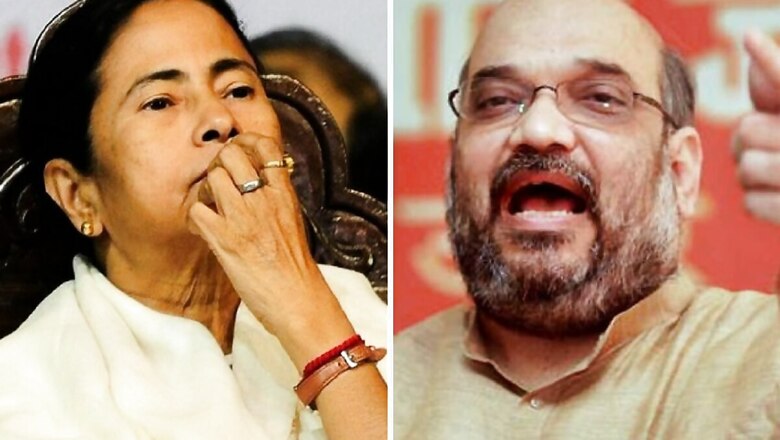
views
About 25 years ago, I was discussing caste politics in Bengal with an eminent social scientist based in Kolkata. He said, assertively, that there is no caste in Bengal. I did not confront him but started thinking about the various class-caste conflicts that have shaped social identities in Bengal.
I could clearly see that caste was always present in Bengal politics, but overpowered by two meta narratives- first, the ‘Bhadralok’ narrative, and second, the Left narrative. The ‘Bhadralok’ narrative was created by a patronizing upper caste elite, who ignored the ‘chhotolok’ (lower caste) narrative, which one may otherwise hear whispering in various parts of Bengal, seeking dignity and equal access. The Left narrative appropriated the lower castes as ‘proletariat comrades’ and did not allow them to have their own distinct social identity and narrative—that of the marginalized.
Asserting Identity in pre-Independence Bengal
One form of caste politics in Bengal is the dominance of the upper castes, who constitute around 12 to 15 per cent of the total state population. They are also the political elite, be it in the Congress, the Trinamool Congress or the Left. Then, there is the vibrant politics of the Scheduled Caste communities, which is not discussed sufficiently in the context of Bengal.
The ‘chhotolok’ or the lower castes were visible in Bengal politics under the banner of the B.R. Ambedkar’s Scheduled Caste Federation, led in the state by eminent Dalit leader and lawyer Jogendra Nath Mandal during the pre-colonial era. We may remember that he invited Babasaheb Ambedkar to contest the 1946 constituent assembly election from Jessore-Khulna constituency in Bengal. In this election, seven legislative council members belonging to Dalit communities, such as the Namasudra and Rajbanshis, voted for Babasaheb.
In Swaraj Basu’s book on Rajbanshis, Dynamics of a Caste Movement: The Rajbansis of North Bengal, and Sekhar Bandyopadhyay’s work on Namasudra’s assertion, Caste, Protest and Identity in Colonial India: The Namasudras of Bengal, 1872-1947, the voices of these communities, who were struggling to assert themselves politically in Bengal, have been recorded.
ALSO READ| Bengal Elections: With Once-Trusted Lieutenants Training Guns At Mamata Banerjee, TMC is Hit By Desertions
Decline of Left, Rise of Matuas
The post-Left politics of Bengal was almost working in the Left mode, accustomed to seeing these marginal communities as its followers, cadres and voters.
However, caste assertion started becoming more pronounced in Bengal politics after the decline of the Left narrative. The Matuas, one of the vocal Dalit communities in Bengal, started re-organizing themselves politically. The Matuas mostly belong to the Namasudra community, who returned to Bengal as migrants from present-day Bangladesh in successive phases after Partition. They formed the Matua Mahasangha and asserted themselves as a powerful electoral vote bank and started building pressure on the state and the political parties to support their demand for citizenship in India.
The Matua Mahasangh claims it has a five-crore-strong community and many among them have not got Indian citizenship. There are more than 16 Dalit communities in Bengal, and among them, Matuas have shown significant progress in education, employment and other developmental sectors compared to other scheduled caste communities in Bengal.
A Political Split in the Community
The Matuas have intensified their political movement since 2009. Trinamool Congress (TMC) leader Mamta Banerjee realized their political potential and provided ministerial berth to one of their community leaders, Manjul Krishna Thakur, son of ‘Baroma’ or Binapanidevi, the spiritual leader of the Matua sect. Mamata Banerjee has constantly tried to mobilize the community in her favour.
The Bharatiya Janata Party (BJP), which has now emerged as a powerful political force in Bengal politics, is also making all efforts to bring the Matuas to its side. Interestingly, both the BJP and the TMC are using the Citizenship Amendment Act (CAA) in their own way to get their support. While Mamata Banerjee is arguing the CAA will oust them from the country, using fear as a mobilization strategy, the BJP is proposing the CAA as a hope for the Hindu refugees to get full citizenship in India.
ALSO READ| What Mamata Can Learn From Modi’s Approach During An Ahmedabad Event in 2013
The BJP is working to assimilate the Mauta identity into the Hindutva identity. The TMC is trying to project their identity as that of the Bengali refugee aspiring for citizenship. As it has happened with other communities—when a community has political aspirations and rival political parties try to get its support, the community gets infected with internal strife—the Matuas too are witnessing a split.
The leaders of the Matua community and the members of ‘Baroma’ family stand divided between the TMC and the BJP. ‘Baroma’, the matriarch whose political decisions were undisputed, died in March 2019. It is difficult to predict which strategy will succeed in the upcoming Bengal assembly election to mobilize Matuas—that of fear or hope.
What, however, is certain is that the politics of caste identity may become more prominent and pronounced in Bengal politics in near future, especially in the context of mobilizing marginal communities.
Read all the Latest News, Breaking News and Coronavirus News here



















Comments
0 comment